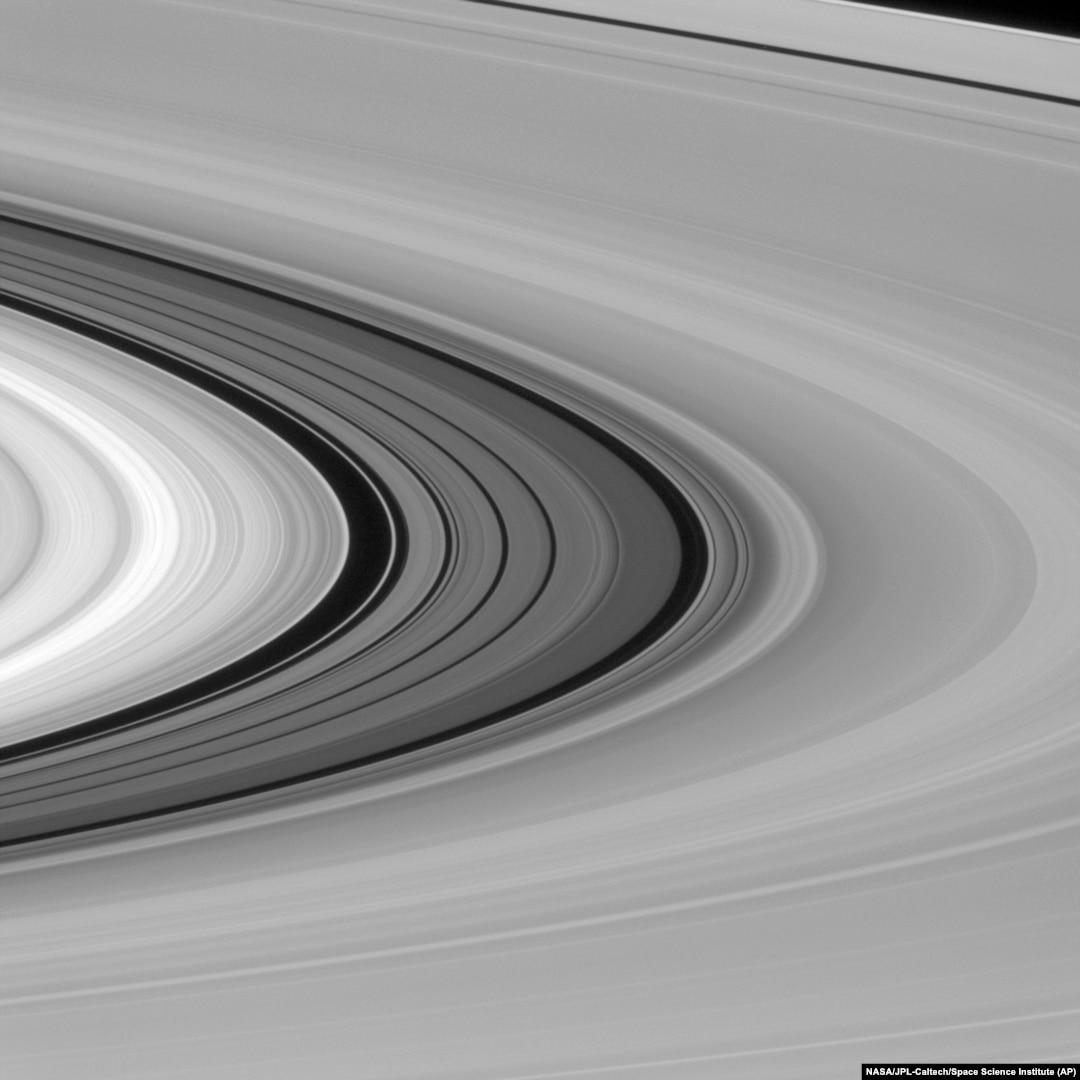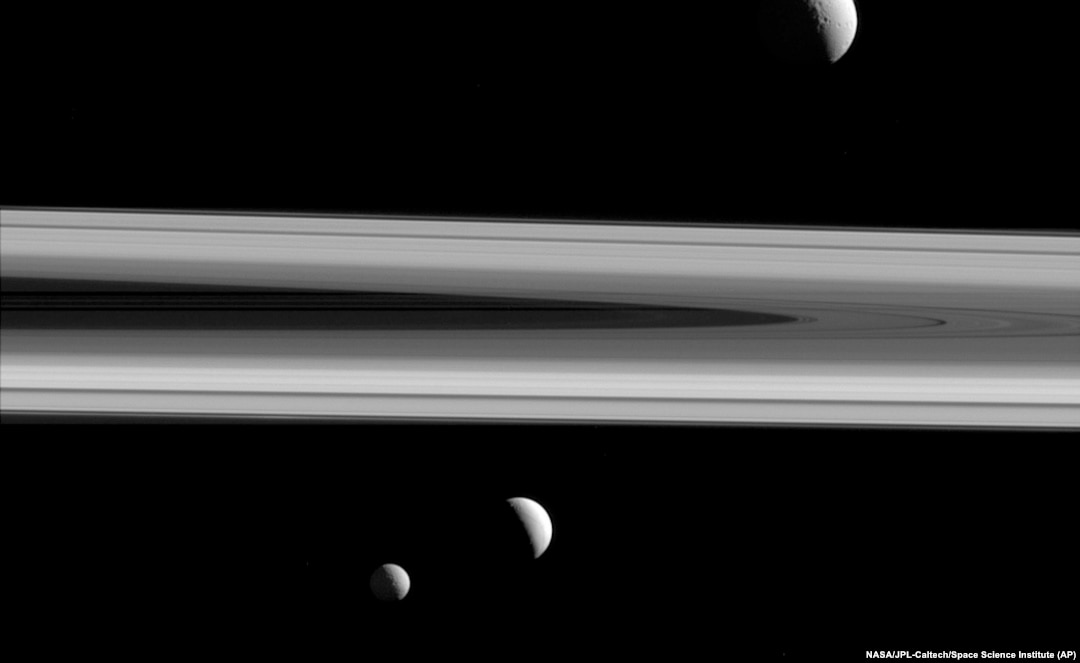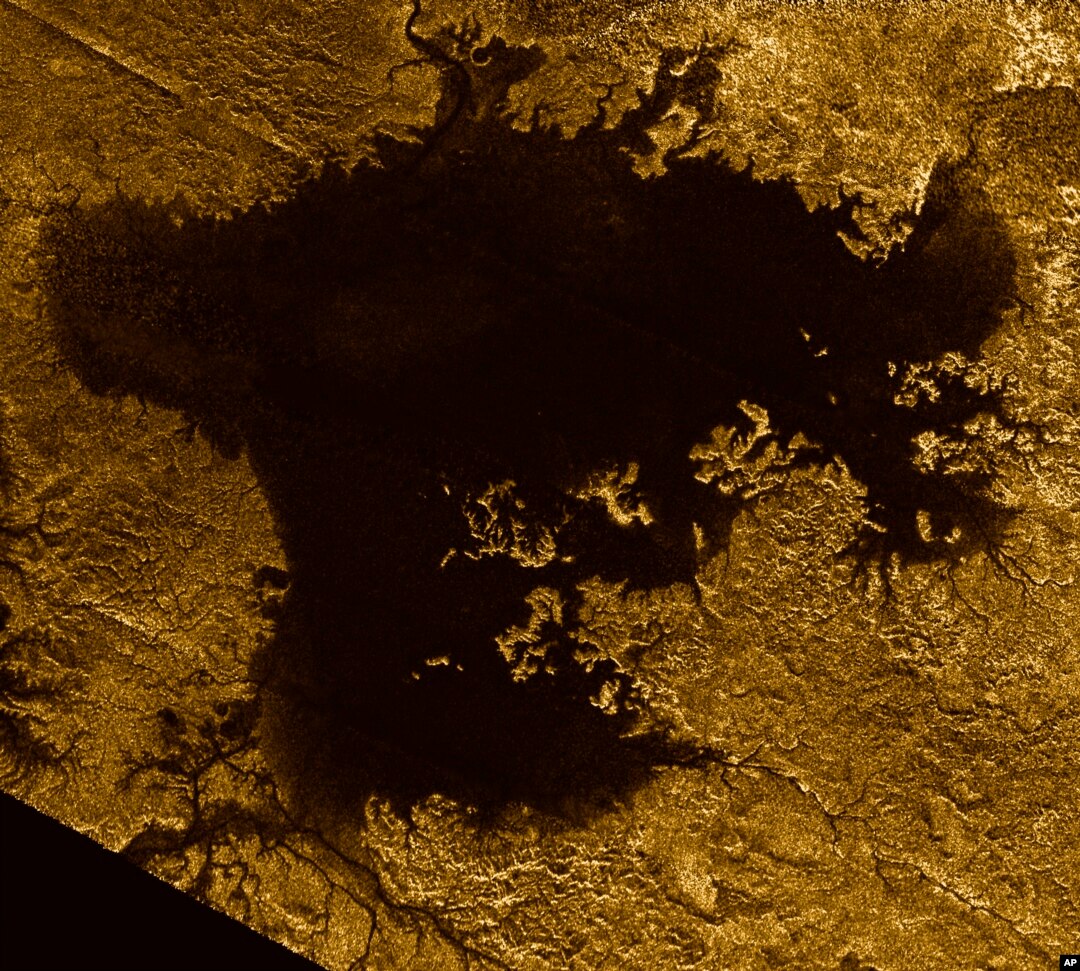Poslednji snimci svemirske sonde Kasini

This Jan. 28, 2016 image made available by NASA shows Saturn's rings, including the darker series of bands called the Cassini Division between the bright B ring, left, and dimmer A ring, right.

This Aug. 12, 2009 composite image made available by NASA shows Saturn in equinox seen by the approaching Cassini spacecraft. Saturn's equinox occurs only once in about 15 Earth years.

This Dec. 3, 2015 image made available by NASA shows three of Saturn's moons - Tethys, above, Enceladus, second left, and Mimas, seen from the Cassini spacecraft.

This 2007 image made available by NASA shows a hydrocarbon sea named Ligeia Mare on Saturn's moon Titan, as seen by the Cassini spacecraft.
This Aug. 14, 2014 image made available by NASA shows shadows of Saturn's rings projected on the southern hemisphere of the gas giant.
The Cassini spacecraft has captured the first detailed images of a giant hurricane on Saturn.
This Aug. 23, 2014 image made available by NASA shows the fluid dynamics in Saturn's uppermost cloud layers.
The Saturn moons Mimas and Pandora appear together in this image taken by NASA's Cassini spacecraft. Pandora's small size means that it lacks sufficient gravity to pull itself into a round shape like its larger sibling, Mimas. (NASA/JPL-Caltech/Space Science Institute)
Enceladus, one of moons of Saturn, as seen by NASA's Cassini spacecraft. (NASA)
This image of Saturn taken with the Cassini spacecraft wide-angle camera on Nov. 23, 2013 and released on Feb. 3, 2014 was taken using a spectral filter that preferentially admits wavelengths of near-infrared light centered at 752 nanometers. (NASA/JPL-Cal Tech)
In this rare image taken on July 19, 2013, the wide-angle camera on NASA's Cassini spacecraft has captured Saturn's rings and our planet Earth and its moon in the same frame. (Credit: NASA/JPL-Caltech/Space Science Institute)
Dione with Enceladus in the background. This image was taken by the Cassini spacecraft, Sept. 8, 2015.
This Nov. 13, 2015 composite image made available by NASA shows an infrared view of Saturn's moon, Titan, as seen by the Cassini spacecraft. The near-infrared wavelengths in this image allow the cameras to penetrate the haze and reveal the moon's surface.
This Feb. 17, 2005 image made available by NASA shows plumes of water ice and vapor from the south polar region of Saturn's moon Enceladus. The activity is understood to originate from the moon's subsurface ocean of salty liquid water, which is venting into space.
This series of images from NASA’s Cassini spacecraft shows the development of the largest storm seen on the planet since 1990. These true-color and composite near-true-color views chronicle the storm from its start in late 2010 through mid-2011, showing how the distinct head of the storm quickly grew large but eventually became engulfed by the storm’s tail.

